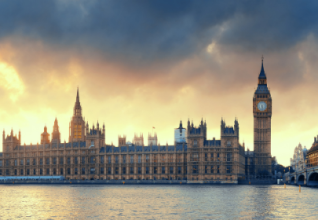Legal protection for Leaseholders
Leaseholders are for the first time legally protected from bills to make their homes safe, as measures in the Building Safety Act 2022 come into force from the 28 of June 2022. Those responsible for historical safety defects, and those who own buildings, will instead be required to fund essential repairs.
Some developers are already stepping up and doing the right thing, 45 of the UK’s biggest homebuilders have agreed to fix life-critical fire-safety defects on all buildings 11 metres+ that they have played a role in developing or refurbishing in the last 30 years.
Stronger measures in the act include new powers for the Secretary of State to restrict irresponsible developers’ ability to build new homes, an extension of the Building Safety levy worth an estimated £3 billion, and improving building owners’ rights to launch legal action against developers.
For the first time, qualifying leaseholders living in buildings above 11 metres tall or with at least 5 storeys will be legally protected from extortionate building safety costs.
The Secretary of State has written to freeholders and made clear that leaseholders being faced with large invoices for building safety repairs will stop. The letter reminds freeholders that qualifying leaseholders now have protections in law from costs and that they will be acting illegally if they attempt to circumvent them.
The letter also reminds them of their new responsibilities as part of the Act, including ensuring buildings have updated fire risk assessments that reflect the latest guidance on proportionality.
Where freeholders or owners of buildings over 18m with cladding-related issues do not have clear plans to address these issues, they must have full assessments ready to submit to the Building Safety Fund, which will reopen for new applications shortly, helping to ensure applications can be handled in good time, reducing the disruption and stress to leaseholders.
They must inform and consult leaseholders throughout. If they do not do these things, responsible authorities now have the legal powers to compel them to remediate their buildings and to ensure that they meet the costs.
The following measures from the Building Safety Act have been prioritised to ensure leaseholders are protected and will come into force from 28th June 2022:
- Qualifying leaseholders (those living in their own homes, or with up to 3 UK properties in total) will be protected, in full, from the costs associated with the remediation of unsafe cladding. They will also have robust and far-reaching protections from the costs associated with non-cladding defects, including interim measures like waking watches.
- It will be illegal for freeholders to pass on the cost of historical building repair works or the removal of cladding to any of their leaseholders, including non-qualifying leaseholders, if they are or are linked to the building’s developer.
- It will be illegal for freeholders to pass on any historical building safety costs to qualifying leaseholders if they pass the wealth test set out in law.
- Where a developer cannot be held responsible and the building owner is not required to meet the costs in full, leaseholders with non-cladding related issues will also be protected by a cap on how much they can pay for these costs. The cap will only apply to non-cladding related work for those whose property is valued at more than £325,000 (London) and £175,000 outside London (owners of properties below this ceiling will pay nothing). Where leaseholders have bought through shared ownership, their cap will reflect their share of ownership in the property.
- Any costs that are not recoverable from leaseholders will need to be met by building owners and landlords.
- Buyers of new build homes will be able to hold their developer responsible for safety and quality issues under a new scheme from the New Homes Ombudsman.
Other measures in the act include:
- Making industry pay
- New powers for the Secretary of State to restrict irresponsible developers’ ability to build new homes, including if they refuse to take responsibility for fixing life-critical fire safety defects on all buildings 11 metres+ that they have played a role in developing or refurbishing in the last 30 years.
- Extending the Building Safety Levy to be charged on all new residential buildings. Expected to raise an estimated £3 billion over 10 years, this will fund a new government scheme to pay for the removal of unsafe cladding on buildings of 11-18m where the developer cannot be traced or has failed to agree to cover the costs upfront.
- Enhanced civil liabilities for building owners, enabling them to launch legal action against developers, contractors and manufacturers for shoddy construction works and defective products which have caused homes to be unhabitable in the past 30 years.
- Extra powers for the courts in England and Wales to go after associated companies. This means businesses who have hidden behind shadowy shell companies within their corporate structures can now be pursued to pay.
These new laws will allow the government to consider appropriate action to pursue these companies as part of a new Recovery Unit that is based in the Department for Levelling Up, Housing and Communities.


